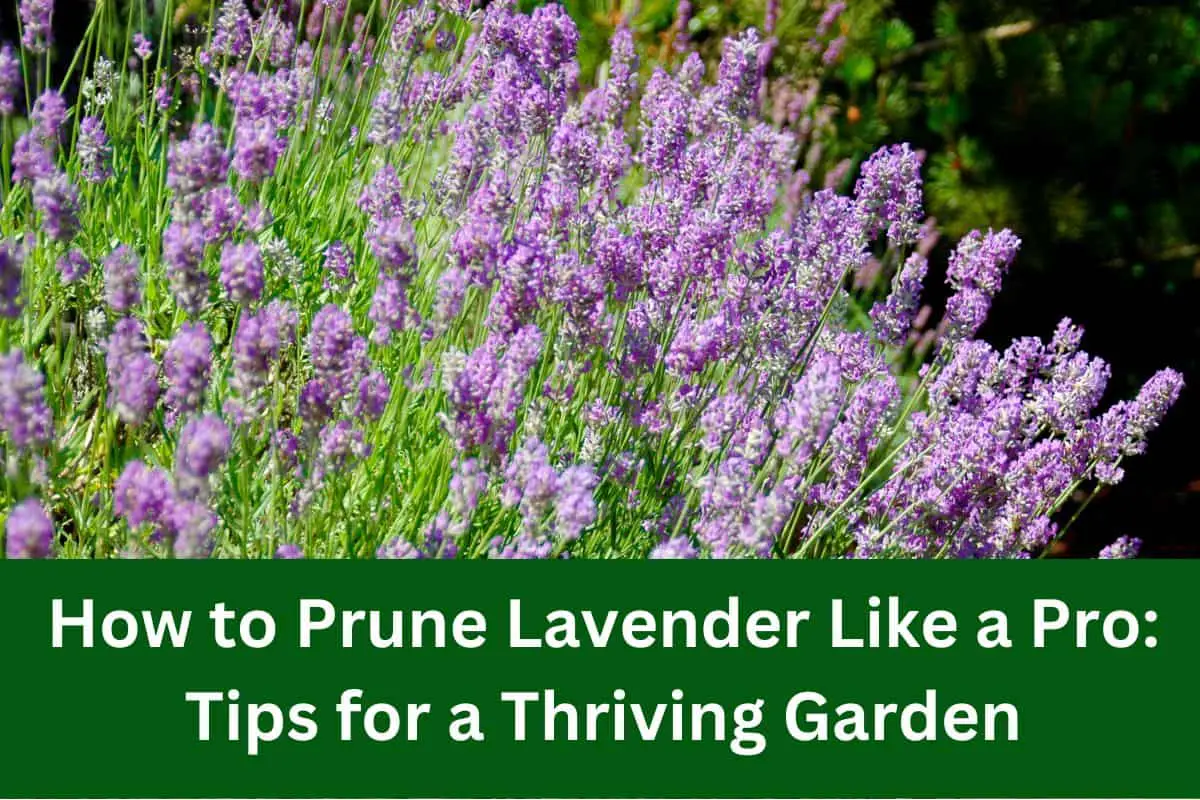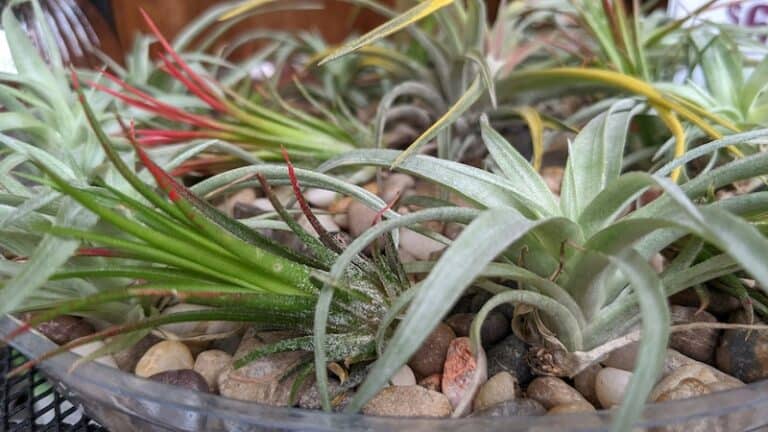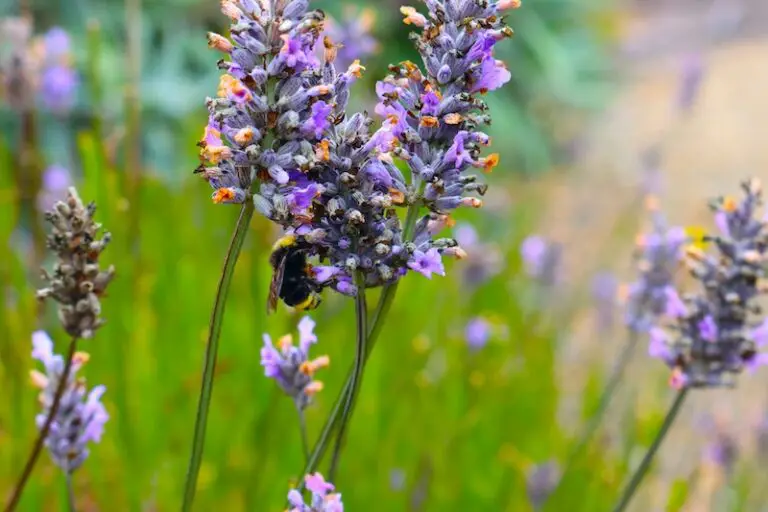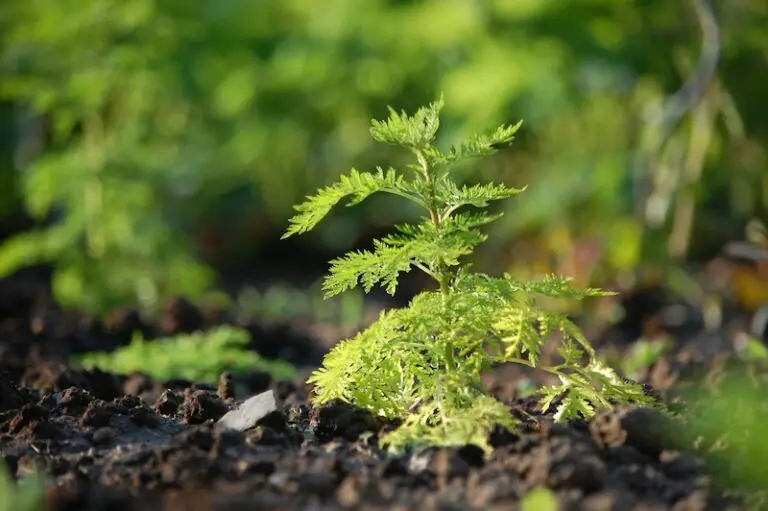How to Prune Lavender Like a Pro: Tips for a Thriving Garden
To prune lavender, cut back one-third of the plant’s growth in early spring or late summer. Avoid cutting into old wood.
Lavender pruning is essential for maintaining plant health and encouraging prolific blooms. Pruning helps prevent the plant from becoming woody and unruly. Start by trimming off spent flowers and any dead or damaged stems. A well-pruned lavender plant stays compact and produces more flowers.
Always use sharp, clean shears to avoid damaging the plant. Regular pruning also improves air circulation, reducing the risk of disease. Proper timing is crucial; prune in early spring or late summer. This practice ensures your lavender remains vibrant and lush year after year.

Credit: www.gardengatemagazine.com
Introduction To Lavender Pruning
Lavender is a beautiful, fragrant plant. It thrives with proper care. Pruning lavender is essential for its health and appearance. In this guide, learn how to prune your lavender effectively.
Why Pruning Is Essential
Pruning is necessary for lavender. It helps the plant stay healthy. Cutting back old growth encourages new blooms.
- Prevents the plant from becoming woody.
- Encourages dense, bushy growth.
- Improves air circulation around the plant.
Benefits For Your Garden
Pruning lavender benefits your garden in many ways. A well-pruned plant looks more attractive. It also improves overall garden health.
| Benefit | Description |
|---|---|
| Increased Blooms | Pruning encourages more flowers. |
| Better Shape | Makes the plant look tidy and neat. |
| Disease Prevention | Reduces risk of plant diseases. |
Choosing The Right Tools
Pruning lavender helps maintain its shape and encourages new growth. To do this effectively, you need the right tools. Using proper tools makes the job easier and ensures healthy cuts.
Essential Pruning Tools
The essential tools for pruning lavender are simple but effective. Here are the must-haves:
- Pruning Shears: These are perfect for small to medium-sized lavender plants.
- Bypass Loppers: Use these for larger, woody stems that are hard to cut with shears.
- Hand Gloves: Protect your hands from scratches and sap.
- Rake: Clean up the trimmings easily after pruning.
| Tool | Purpose |
|---|---|
| Pruning Shears | For small to medium cuts |
| Bypass Loppers | For larger, woody stems |
| Hand Gloves | Protects hands |
| Rake | Clean up trimmings |
Maintaining Your Tools
Maintaining your tools is crucial for efficient pruning. Clean and sharp tools make clean cuts, reducing plant damage.
- Clean your tools after each use. Use soapy water to remove sap and dirt.
- Sharpen the blades regularly. A sharp blade makes cleaner cuts.
- Oil the moving parts. This prevents rust and ensures smooth operation.
- Store tools in a dry place. Moisture can cause rust and damage.
Using and maintaining the right tools ensures your lavender stays healthy and beautiful.
When To Prune Lavender
Knowing the right time to prune lavender is crucial. Pruning keeps your lavender healthy and blooming beautifully. Let’s explore the best times to prune and the signs that your lavender needs it.
Optimal Pruning Seasons
The best time to prune lavender is in the spring and late summer. In the spring, prune your lavender plants as soon as new growth appears. This helps shape the plant and encourages more blooms. Late summer pruning is done after the lavender has finished flowering. This helps prepare the plant for the colder months.
Here’s a simple table to remember the optimal pruning seasons:
| Season | When to Prune |
|---|---|
| Spring | When new growth appears |
| Late Summer | After flowering ends |
Signs Your Lavender Needs Pruning
Look for these signs to know when your lavender needs pruning:
- The plant looks woody at the base.
- The flowers are fewer and smaller.
- The plant is overgrown and losing its shape.
Regular pruning helps maintain the plant’s shape and health. It also encourages new growth and more blooms.

Credit: www.gardengatemagazine.com
Preparing Your Lavender Plant
Before pruning your lavender, you need to prepare the plant. Proper preparation ensures the plant remains healthy. Follow these steps to get your lavender ready.
Pre-pruning Inspection
First, inspect your lavender plant closely. Look for dead or damaged stems. Healthy stems are crucial for a vibrant plant.
- Check for dead stems: Dead stems are brown and brittle.
- Spot any damaged areas: Damaged stems may have cracks or splits.
- Identify healthy growth: Healthy stems are green and flexible.
Cleaning The Plant
Next, clean your lavender plant. Cleaning removes any debris or pests. This step is essential for the plant’s overall health.
- Remove debris: Gently clear any leaves or sticks.
- Check for pests: Look for insects or webs.
- Use a soft brush: Brush off any dirt or dust.
Once cleaned, your lavender plant is ready for pruning. Clean plants respond better to pruning. A clean plant also promotes healthier growth.
Basic Pruning Techniques
Lavender requires pruning to stay healthy and produce beautiful blooms. Knowing how to prune lavender properly ensures your plant thrives. Let’s explore some basic techniques.
Step-by-step Guide
- Identify the Right Time: Prune lavender in spring or after flowering.
- Gather Your Tools: Use sharp, clean pruning shears.
- Trim the Plant: Cut back one-third of the plant’s height.
- Shape the Plant: Create a rounded mound shape.
- Avoid Cutting into Old Wood: Prune only green, leafy stems.
Common Mistakes To Avoid
- Pruning Too Early: Wait until the last frost has passed.
- Cutting Too Much: Never cut more than one-third of the plant.
- Ignoring Dead Stems: Remove any dead or diseased stems.
- Using Dull Tools: Always use sharp, clean shears for clean cuts.
| Pruning Task | Best Practice |
|---|---|
| Time of Pruning | After flowering or in early spring |
| Tools | Sharp, clean pruning shears |
| Amount to Cut | One-third of the plant’s height |
| Shaping | Round, mound shape |
By following these basic pruning techniques, your lavender will grow strong and beautiful. Remember, proper pruning promotes healthy growth and abundant blooms.
:max_bytes(150000):strip_icc()/SPR_3269530-how-to-prune-lavender-5ac61e5bff1b780037e83c52.png)
Credit: www.thespruce.com
Advanced Pruning Methods
Advanced pruning methods help keep your lavender plants healthy. They also ensure they look beautiful in your garden. In this section, we’ll dive into some advanced techniques. These methods can shape your lavender and promote new growth.
Shaping Your Lavender
Shaping your lavender is essential for a neat appearance. Proper shaping also encourages the plant to grow more evenly.
Follow these steps to shape your lavender:
- Start by identifying the shape you want.
- Use sharp, clean shears for precise cuts.
- Trim back about one-third of the plant’s height.
- Ensure you cut just above a leaf node.
By following these steps, you can create a rounded, bushy lavender plant. This shape helps the plant withstand wind and weather. It also encourages more blooms.
Promoting New Growth
Promoting new growth is key to a healthy lavender plant. New growth ensures a continuous supply of flowers.
Here are the steps to promote new growth:
- Prune your lavender after flowering ends.
- Trim back the stems by one-third.
- Remove any dead or woody stems.
- Ensure you leave some green growth on each stem.
These steps encourage the plant to produce new shoots. New shoots are where the flowers will grow. Regular pruning also prevents the plant from becoming too woody.
Remember, lavender plants thrive with the right care. Using advanced pruning methods keeps your plants healthy and beautiful.
Caring For Pruned Lavender
After pruning your lavender, it’s crucial to provide proper care. This ensures the plant remains healthy and blooms beautifully. Follow these tips to keep your pruned lavender thriving.
Watering Tips
Lavender prefers dry conditions. Overwatering can harm the plant. Water the lavender once a week. Ensure the soil is dry before watering again. Use a watering can with a narrow spout. This helps direct water to the plant’s base.
Consider the weather. In hot, dry climates, water more frequently. In cooler, humid conditions, water less often. Always check the soil’s moisture level first.
Fertilization Strategies
Lavender doesn’t require much fertilizer. Too much can reduce its aroma. Use a balanced, slow-release fertilizer. Apply it in early spring. This supports new growth and blooms.
Follow these steps for best results:
- Choose a fertilizer with equal parts nitrogen, phosphorus, and potassium.
- Apply a small amount around the base of the plant.
- Water the plant after fertilizing to help nutrients absorb.
Repeat this process annually for healthy lavender.
Addressing Common Issues
Pruning lavender is essential for healthy growth. But common issues can arise. Knowing how to handle these issues helps keep your lavender thriving. Below, we address two major concerns: pest control and disease prevention.
Pest Control
Lavender is usually pest-resistant, but not always. Some pests still attack it. Here are common lavender pests and how to control them:
- Aphids: These tiny insects suck plant juices. Spray soapy water to get rid of them.
- Spider Mites: These pests cause leaves to turn yellow. Increase humidity and spray neem oil.
- Whiteflies: They weaken the plant by feeding on it. Use sticky traps to catch them.
Disease Prevention
Lavender can suffer from various diseases. These diseases affect its growth and health. Follow these steps to prevent common lavender diseases:
| Disease | Prevention Tips |
|---|---|
| Root Rot | Ensure good drainage. Do not overwater. |
| Fungal Infections | Provide good air circulation. Prune regularly. |
| Leaf Spot | Remove affected leaves. Use fungicides if needed. |
Pruning Different Lavender Varieties
Lavender is a fragrant herb popular in gardens. Pruning is essential for healthy growth and abundant blooms. Different lavender varieties require specific pruning techniques. Let’s explore how to prune English and French lavender for the best results.
English Lavender
English lavender (Lavandula angustifolia) is the most common type. Prune it twice a year for best growth. Follow these simple steps:
- First prune: In late spring, trim back the plant by one-third. This encourages bushier growth.
- Second prune: After flowering, cut back flower spikes. Trim about one-third of the green growth.
Avoid cutting into the woody part of the plant. This can damage it. Pruning keeps your English lavender healthy and vibrant.
French Lavender
French lavender (Lavandula dentata) has a different pruning schedule. Prune it three times a year:
- First prune: In early spring, trim back the plant by one-third. This promotes new growth.
- Second prune: After the first bloom, cut back flower spikes. Trim about one-third of the green growth.
- Third prune: In late summer, give a light trim. This keeps the shape tidy.
French lavender tends to grow more woody. Avoid cutting into the woody stems. Regular pruning ensures your French lavender stays lush and blooming.
Follow these guidelines for healthy, beautiful lavender plants. Happy gardening!
Seasonal Pruning Tips
Proper pruning ensures your lavender stays healthy and blooms beautifully. Each season requires specific pruning techniques. This guide helps you through spring pruning and autumn pruning.
Spring Pruning
Spring is a crucial time for lavender. Pruning in spring encourages new growth.
- Wait until new green growth appears.
- Use sharp, clean shears to avoid plant damage.
- Cut back the top third of the plant.
- Remove any dead or woody stems.
Ensure you don’t cut into old wood. Lavender struggles to regrow from old wood.
Autumn Pruning
Autumn pruning prepares your lavender for winter. It keeps the plant tidy and healthy.
- Prune after the last bloom of the season.
- Trim back by one-third to shape the plant.
- Remove any spent flower stalks.
- Cut back any spindly or weak growth.
Avoid heavy pruning in autumn. Lavender needs some foliage to survive winter.
Long-term Lavender Care
Lavender is a beloved plant known for its beauty and fragrance. To keep your lavender healthy and thriving for years, pruning is essential. Proper care ensures it remains vibrant and productive.
Maintaining Plant Health
Regular pruning helps maintain the health of your lavender plant. By removing dead or damaged stems, you allow new growth. This keeps the plant strong and healthy.
Use sharp, clean shears to prune your lavender. Cut back about one-third of the plant. This encourages new growth and prevents the plant from becoming woody.
Here is a simple table for your reference:
| Task | Frequency |
|---|---|
| Pruning | Once a year |
| Watering | Weekly |
| Fertilizing | Twice a year |
Encouraging Longevity
To ensure your lavender plant lives long, consistent care is key. Pruning helps to encourage longevity by stimulating new growth.
Follow these steps to prolong the life of your lavender:
- Prune in late summer or early fall.
- Remove any dead or diseased stems.
- Cut back to the green growth, not into old wood.
By following these tips, your lavender will stay healthy and live longer. Encouraging longevity ensures your garden remains beautiful for years to come.
Frequently Asked Questions
When Should Lavender Be Cut Back?
Cut back lavender in early spring or late summer after flowering. Prune to maintain shape and promote growth.
Where Do You Cut Lavender For Pruning?
Cut lavender just above the leaf nodes, leaving about one-third of the green growth. Avoid cutting into the woody stems.
What Happens If You Don’t Prune Lavender?
Lavender becomes woody and less productive without pruning. It may also have fewer blooms and an untidy appearance.
Conclusion
Pruning lavender is essential for healthy growth and abundant blooms. Follow these steps for best results. Regular trimming prevents woody stems and encourages new growth. Proper care ensures your lavender thrives and enhances your garden’s beauty. Happy gardening!







